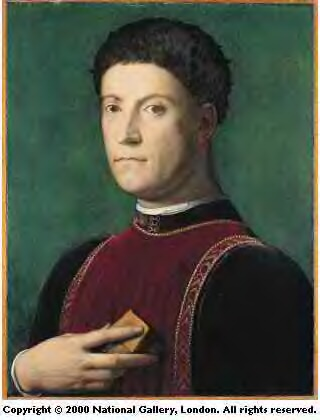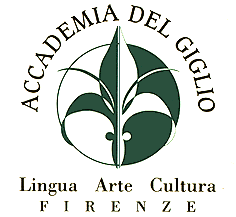 Piero de’ Medici, the son of Cosimo the Elder, was born in Florence in 1416 and became the Lord of Florence in 1464, but his patronage had a brief duration, only 6 years from 1464 to 1469, when he died after a long period of illness. His nickname, “the Gouty”, was due to the gout, a disease quite common in that period among wealthy people. Piero probably inherited the gout from his father, and he suffered from it throughout his life. That is why, during his government, he was often unable to play an important political role. Nevertheless he managed to travel a lot, visit many cities in the North of Italy, following Cosimo the Elder during his exile. During that period he went to Venice and to Ferrara, where he was a guest of the duke D’este. It was in Ferrara that he dedicated himself to the study of ancient Greek and Latin and he had the opportunity to attend a refined and educated milieu.
Piero de’ Medici, the son of Cosimo the Elder, was born in Florence in 1416 and became the Lord of Florence in 1464, but his patronage had a brief duration, only 6 years from 1464 to 1469, when he died after a long period of illness. His nickname, “the Gouty”, was due to the gout, a disease quite common in that period among wealthy people. Piero probably inherited the gout from his father, and he suffered from it throughout his life. That is why, during his government, he was often unable to play an important political role. Nevertheless he managed to travel a lot, visit many cities in the North of Italy, following Cosimo the Elder during his exile. During that period he went to Venice and to Ferrara, where he was a guest of the duke D’este. It was in Ferrara that he dedicated himself to the study of ancient Greek and Latin and he had the opportunity to attend a refined and educated milieu.
In 1444 Piero got married with Lucrezia Tornabuoni, a very cultured and sensible woman, from whom he had three daughters, Maria, Lucrezia – called Nannina – Bianca and two sons, Lorenzo and Giuliano. All his family is probably portrayed in the famous painting by Botticelli, called “Madonna del Magnificat”, where Lucrezia Tornabuoni appears as the Virgin Mary.
When Piero took over his father in the administration of the Medici’s bank, he soon managed to have a financial and commercial overview on business, but after he decided to call up many long-standing loans, several merchants bankrupted and joined the ranks of Medici’s enemies.
He was also the last of the Medicis elected to the office of Gonfaloniere in 1461. When Cosimo the Elder died, Piero the Gouty was 50 and he became the leader of Florence and the first ruler of the city. His government was marked by two important events: an attempted coup and the war against Venice in 1467.
The coup was led by Luca Pitti, and other conspirators supported by the army of the Duke of Modena and Reggio in 1466. Piero was able to escape the coup thanks to the warning of Giovanni Bentivoglio and his son Lorenzo’s promptness. Lorenzo actually happened to discover a road-block set up by the conspirators to capture Piero during his trip to the Medici villa in Careggi; Fortunately he was not recognized so that he succeeded in warning his father and the coup failed.
The war against Venice was carried out by the league of Florence, Naples, Papal States and Milan in order to support Francesco I Sforza – the new duke of Milan. The Venetian army and its general Colleoni were eventually defeated at Molinella.
Besides continuing his father’s tradition of artistic patronage, Piero perhaps had a more elegant and eclectic taste: he charged the architect Michelozzo to design and build two tabernacles for two of the most precious churches of Florence, Santa Maria Annunziata and San Miniato al Monte. These two masterpieces are very accurate in details and show elegant forms and colours. Piero also commissioned works to other important artists such as Botticelli’s Adoration of the Magi, and Gozzoli’s fresco Procession of the Magi, which you may study in our Art History Courses. In both paintings you can spot the portraits of Lorenzo and Giuliano, as well as of Piero himself. Furthermore Piero admired also Dutch and Flemish works and he added many ancient books to the famous Medicis’ collections.
When he died he was buried in the Church of San Lorenzo; his tomb, next to his brother Giovanni’s, is decorated with a statue by Verrocchio, one of the artists he specially admired.
The Medicis Dinasty: Piero the GoutyScrivi un commento |







Commenti recenti